When you think of toy cameras, specific models instantly come to mind—names like Diana, Debonair, Lomography, and Holga. I have in the past reviewed the FPP Debonair, a solid toy camera, but the first toy camera and the one that stuck the most is the Holga. Sadly my camera broke several years back, and I never bothered to replace it. While I did mean to replace the Holga with another one, the sad fact is that in 2015 Holga nearly vanished if not for the quick actions by Freestyle and the Sunrise company. The two managed to recover one mould and restarted production. The Holga is the iconic toy camera. If you’re looking for high-quality performance, you’ll want to look elsewhere, but this is your camera if you want something fun.
Camera Specifications
Make: Sunrise
Model: Holga 120N
Type: Point-And-Shoot
Format: Medium (120), 6×6 or 6×4.5
Lens: Fixed, Optical Lens 1:8 f=60mm
Shutter: Rotary Shutter, ~1/125″
Year of Manufacture: 1982-2015, 2017 – Present
Background
The 1980s saw an explosion in the popularity of photography in China, specifically medium format film and cameras. However, there lacked a new affordable camera; sure, there were the cameras of the 1960s like Diana or Debonair. Enter into this void, Lee Ting-mo, a former Yashica employee who formed his firm in 1969. Lee’s firm first built capacitors but then built complete flash units. The WOC250x became renowned for its quality and power and was marked by the character of Hou Gwong, which translated means “Very Bright.” However, as camera technology advanced and integral flashes began appearing in point-and-shoot cameras, the need for external flash units and market saturation caused Lee’s firm to struggle financially. At least until he latched onto building a medium format camera for the masses. Using a play off the “Hou Gwong” name on his flash units, the first Holga appeared in 1982 but never caught on in the domestic market. The trouble was that 120 films was starting to take a back seat to 35mm in the amateur market. That same decade, China’s control over the economy slackened enough to allow the export of products into western markets, where photographers were starting to take notice of cheap “toy” cameras. The Holga was an instant success among this niche group of photographers. Art photography gobbled up the quirky, surrealistic and impressionist images produced by this medium format camera from China. But what solidified the Holga was a 2001 image of then Presidential candidate Al Gore by David Burnett. Sales rocketed to over one million units. The Holga had formed its cottage industry. However, the rise of digital and cellphone cameras forced a rapid diversification, including 35mm, pinhole, panoramic, Pseudo-TLRs and even Holga lenses for SLRs. Holga struggled to keep up, being a victim of its success and the now rampant market for toy cameras. Holga continued to ride high through its 30th Anniversary in 2011, but that high-water mark would also be the beginning of the end. By 2015 Lee decided to retire, unable to keep up with the fast-moving technology and continued popularity of digital and improved smartphone cameras and photo-sharing platforms that allowed editing to get that “toy camera” look. And while some thought all was lost, Freestyle Photographic and Sunrise Manufacturing secured much of the original Holga moulds and brand and revived the product line in 2017.

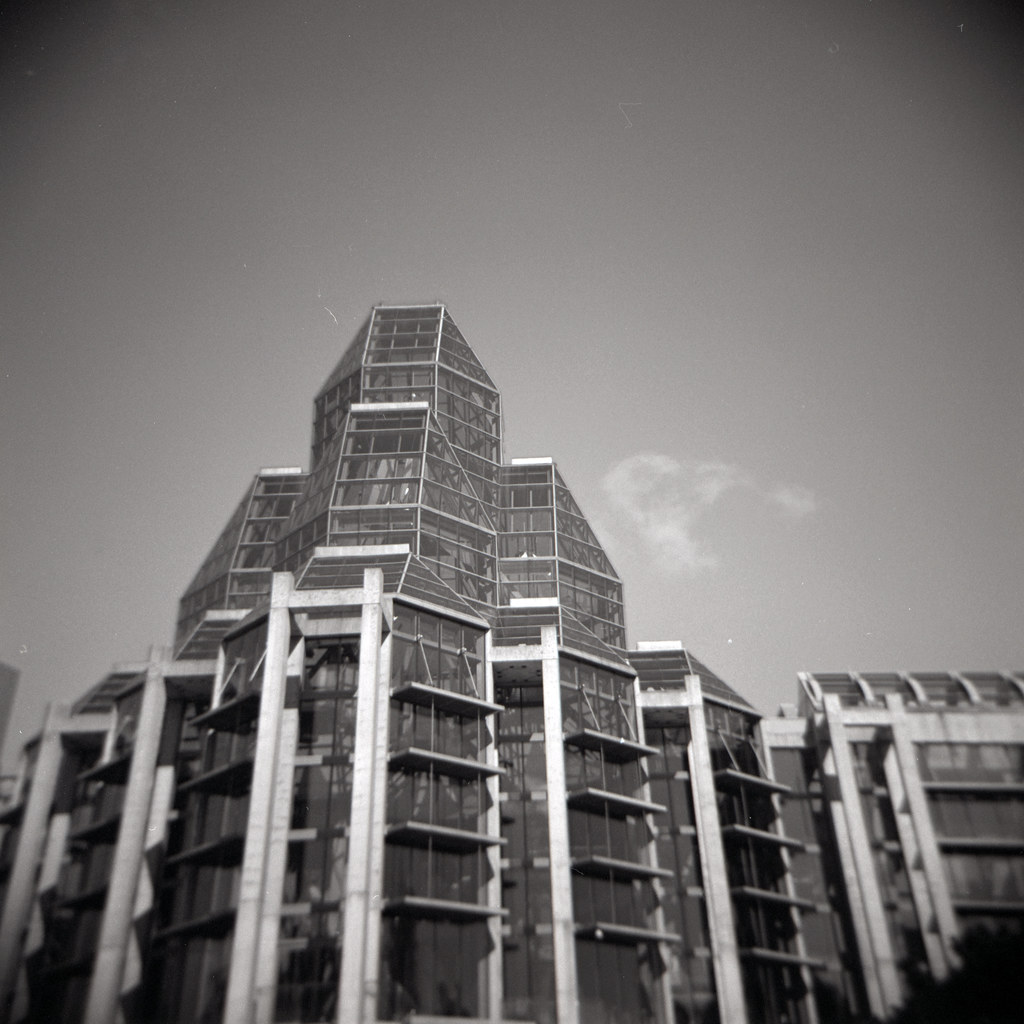

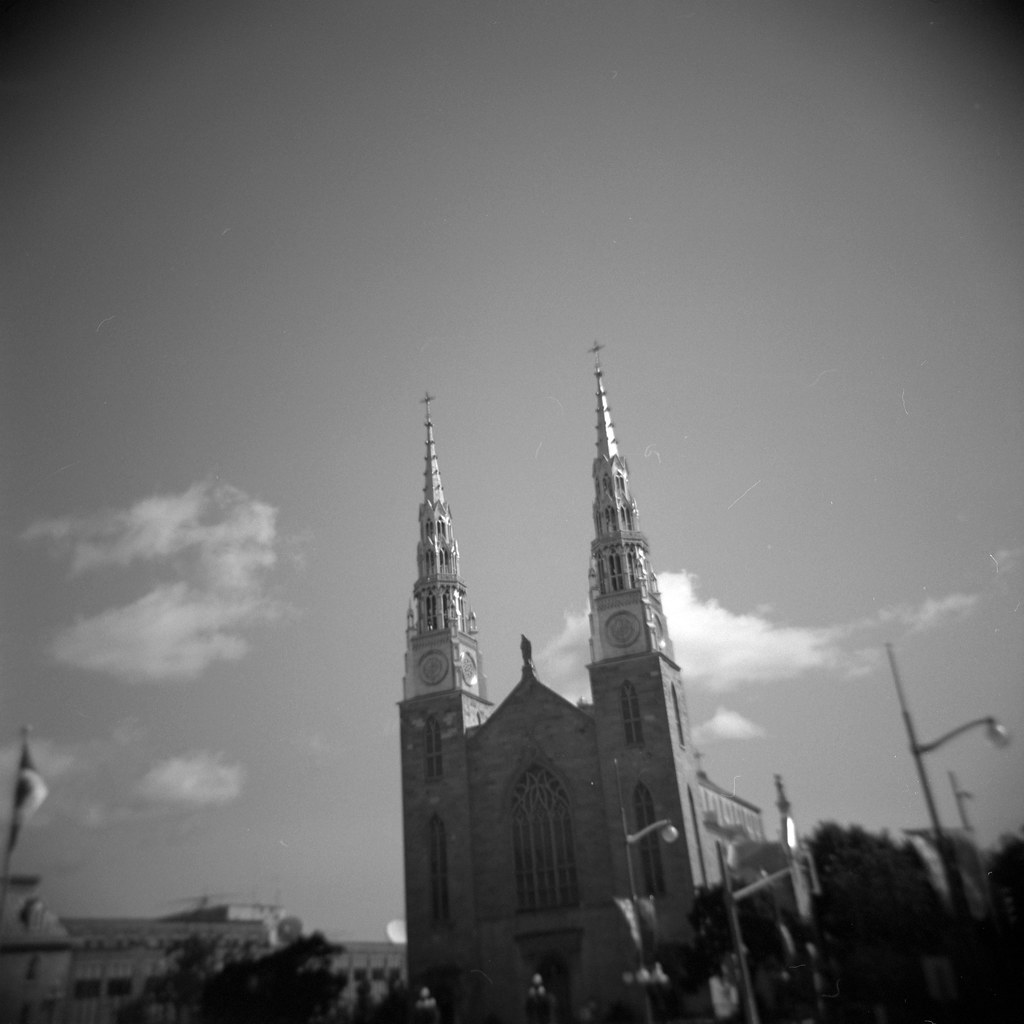
Impressions
The Holga is a perfect reminder if you strip down any camera to the basic idea of what a camera does. A box, a lens, a means to control light, and a light-sensitive media. The camera is a basic box, well laid out, lightweight, and nothing fancy. It is the perfect example of imperfection manifest. Constructed almost entirely of plastic, most of the camera’s controls are focused around the lens mount where the shutter assembly is housed. You have your shutter, a large, easy-to-use leaver that sits perfectly where your finger will be when holding the camera. At the top are your two aperture settings, either f/8 or f/16 approximately; your shutter control is on the bottom to prevent shifts between normal (1/125″) and Bulb mode; sadly, there is no mechanical release on this model. A standard hot shoe for working with flash and a standard tripod socket. The camera does have a simple optical viewfinder, which does help with composition. The entire back is removed for loading film, and you have two red window options, one for 12 frames of 6×6 or 16 frames of 6×4.5. You will also have to update the mask inside the camera body, although I tossed the 645 masks in portrait orientation rather than landscape which is my preferred setup. The back is held by two metal clips and can fit snuggly, although this can change depending on your camera. You have to watch for light leaks, as no two cameras are alike; you might be leak-free on one and plenty on another. You can embrace the leaks or use gaffer tape to seal them up.




Experience
If you want complete control over their exposure and are big into optical quality, these cameras won’t be for you; you might even consider them a waste of film. Loading film can be tricky with removing the entire back and the actual film compartments not holding your spools. Ultimately, make sure you apply a bit of pressure and tension to avoid a dreaded fat roll. Also, pick the film based on the light on the day you’re shooting, although if needed, apply some push or pull processing to help with any potential over and underexposure in the field. Once in the field, the camera is simple; you have a basic viewfinder that helps with composition but always double-check for parallax errors. Focusing is by guess only, but with two apertures, f/8 and f/16 (approximately), you have a bit of forgiveness with the depth of field. Thankfully the lens has a series of icons to help pick your focus, and once you get the hang of it, you’ll be fine. The camera controls are well placed, with the shutter release being a large leaver next to your lens that has a satisfying click when released and an approximate shutter speed of 1/125″, but you also have bulb-exposure; that switch is on the bottom on the lens mount, so you don’t accidentally change your setting. Be careful when advancing film, as it is red window based and not all modern backing paper does well with this; you may even consider covering it up. If you’re looking for a lighthearted camera for imperfect images, the Holga is certain a fantastic tool.
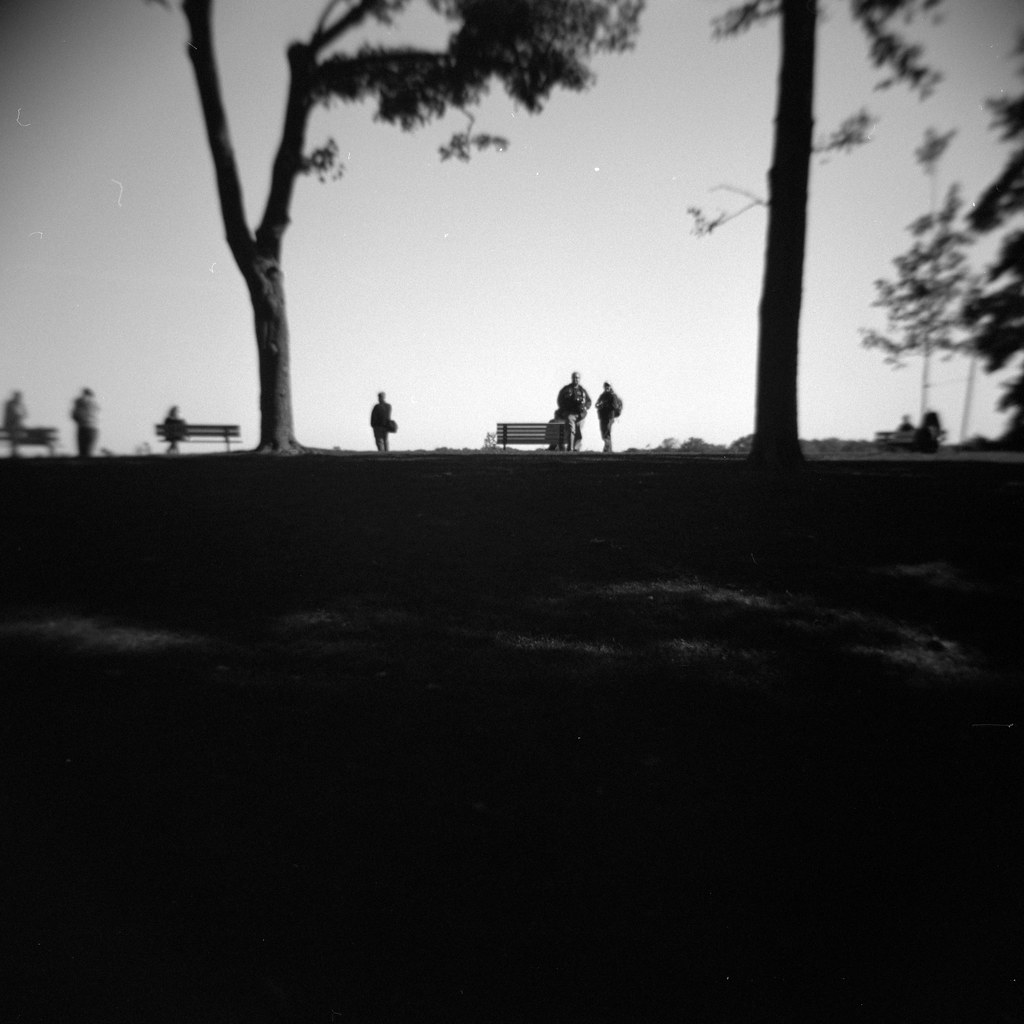


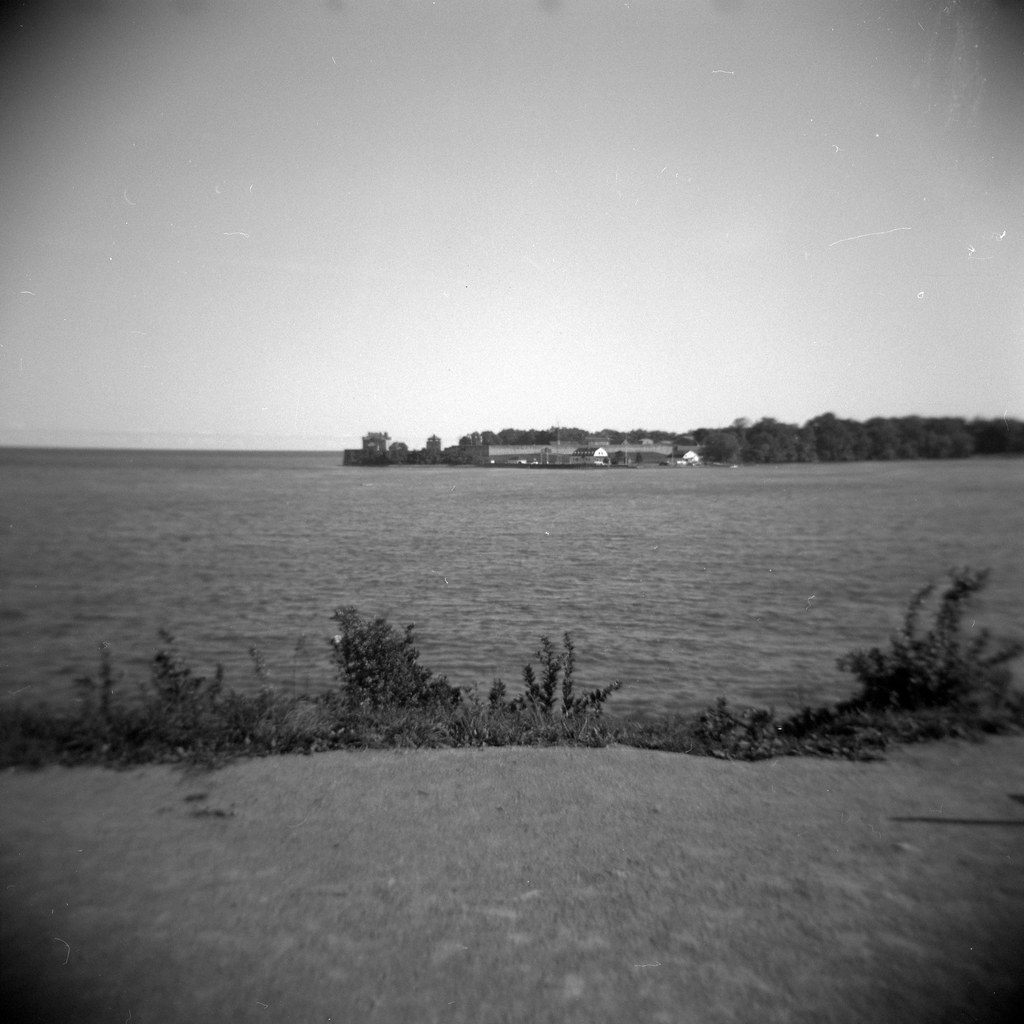
Optics
What makes t e images magical is the lens. With high-quality multi-elements and advanced coating, the Holgas go back to basics. The lens is a single-element meniscus lens and is entirely plastic. A focal length of 60mm adds a certain charm, helps avoid too much camera shake, and gets a good angle with the 6×6, a happy medium between wide-angle and standard. It is a single-element meniscus lens made from plastic. It’s subject to vignetting and fall-off at the corners; you see that more at f/8 than f/16, but also, your copy has a lot to do with how the image turns out. You’ll find they are sharpest at the centre, and then you get soft as you move out to the corners. Knowing this can be advantageous in composing your images with your subject matter dead centre.

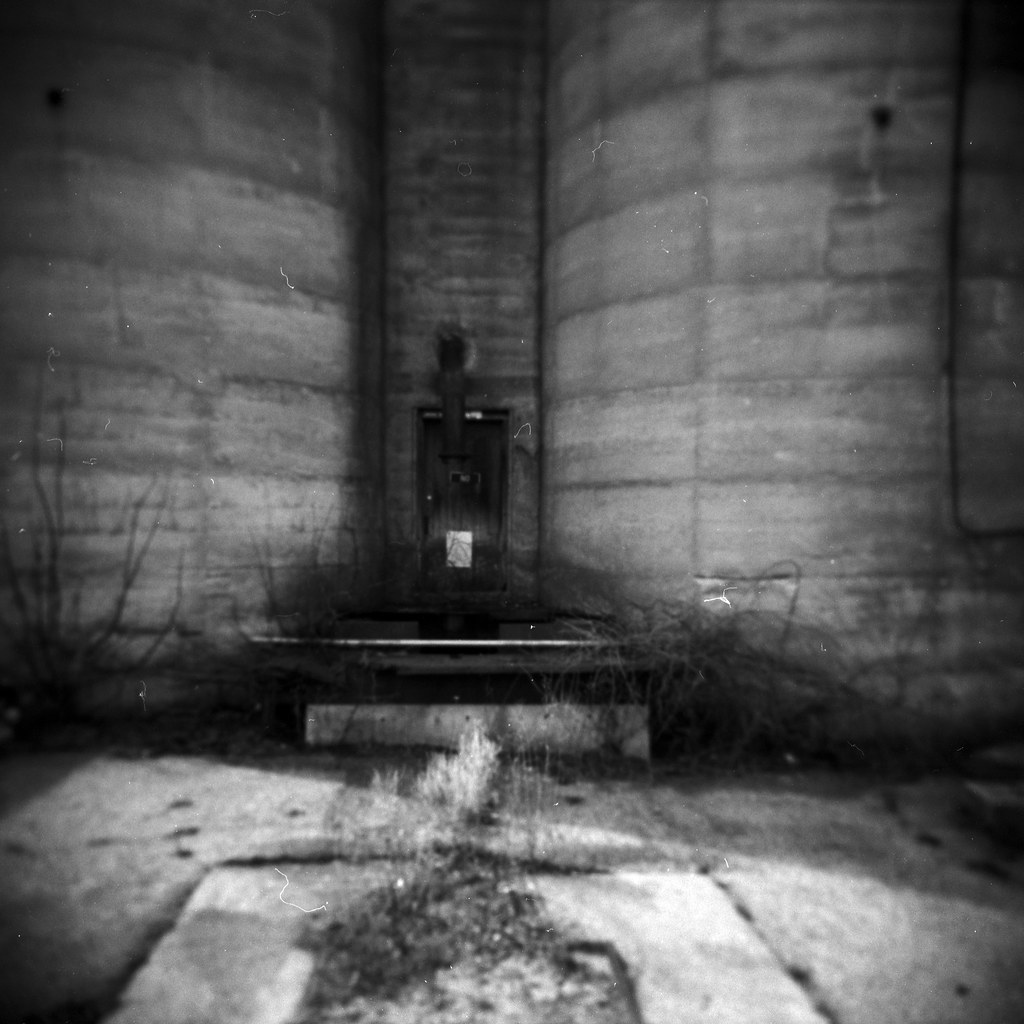


The Lowdown
For transparency, this is a review of the new Holga 120N, and from what I’ve found in my particular model, the new maker has taken all the quirks of the old Holga and cranked them p 50%. Toy cameras are not every photographer’s cup of tea; even I have to be in the right mood to work with them. But if you fi d yourself in the right mindset, you can produce art. Photography doesn’t have to be about perfection in any word. All the rules can be thrown out the window, and in the end, if you produce an image that you love, you’ve to do it. Sure, if I need high quality, I’ll go to my Rolleiflex or Hasselblad, but I’ll grab the Holga if I want fun. Remember, life isn’t perfect, sharp, or focused; sometimes, just let your photos reflect that.
Further Reading
Don’t just take my word on the Holga 120N; you can check out the reviews by other awesome camera reviewers!
PhotoThinking – Holga 120N: A Serious Toy Camera
Canny Cameras – Holga 120N: End of A (Plastic) Era
Casual Photophile – Holga Medium Format Camera Review – Still Worth It, or Total Cliché?
My Favourite Lens – Holga 120N Review
Eric Constanineu – Holga 120N Review
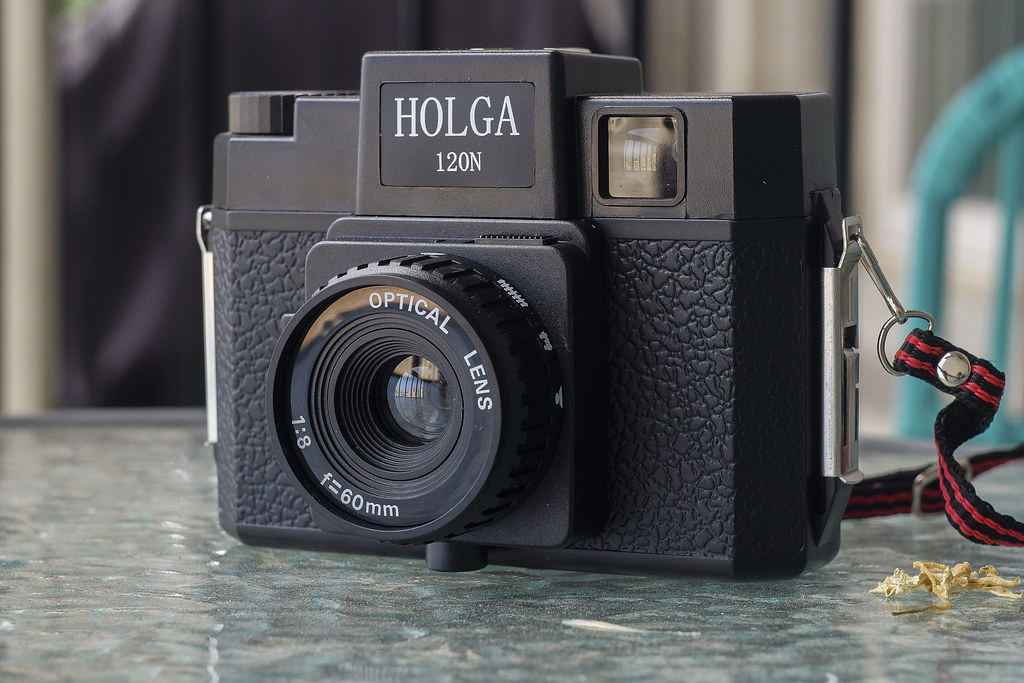
3 Comments